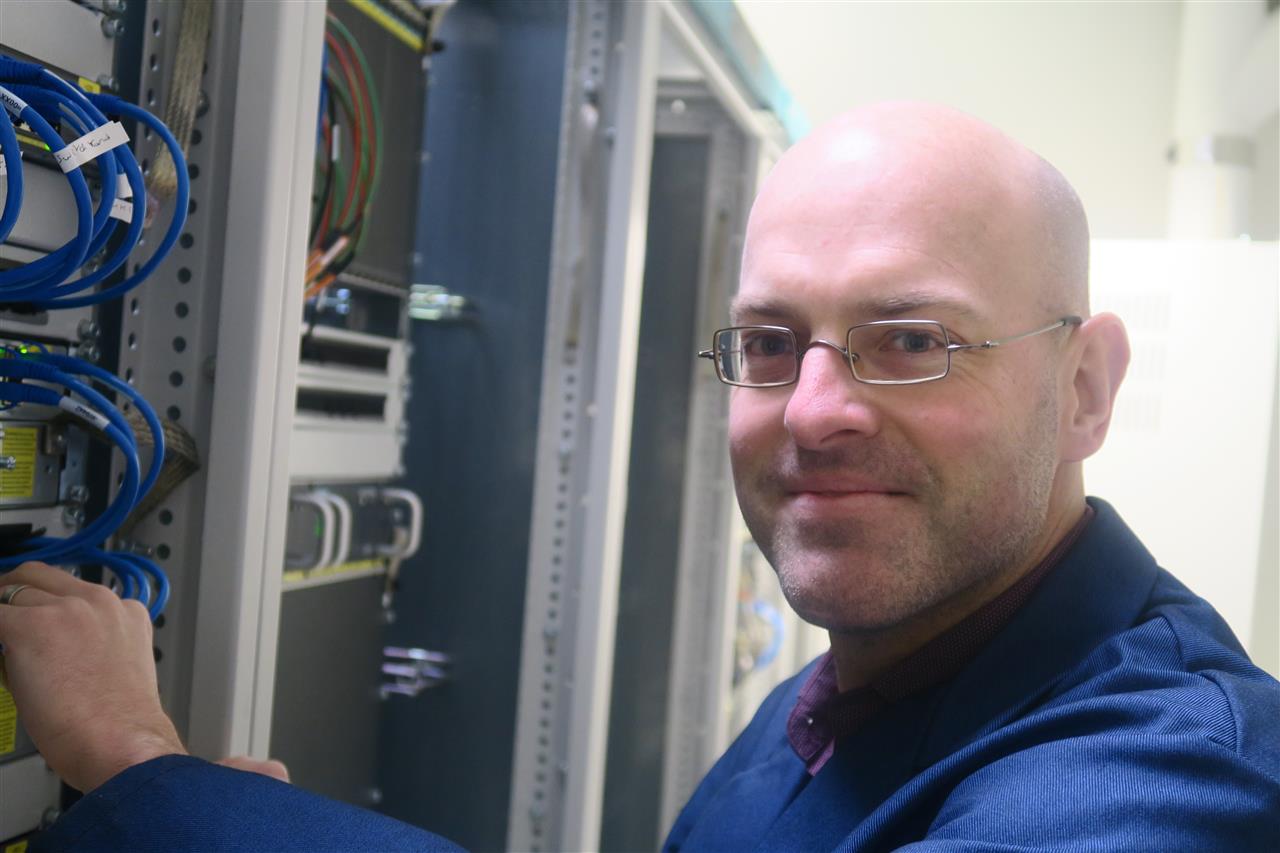What makes it possible to call a friend with a different cell phone provider or withdraw money securely from another bank's cashpoint? The answer is "interoperability" which refers to the capability of two or more networks, systems, devices, applications, or components to share information. In electric power systems, interoperability means the seamless end-to-end connectivity of different equipment, from power generation to customers.
In the future, direct current (DC) will gradually replace alternating current (AC) in electric grids. Direct current is the preferred technology for moving large amounts of power across long distances. It results in overall higher efficiency and reliability than an equivalently sized alternating current.
The new DC grids will use controls, computers, automation, and new technologies and equipment, all working together. Interoperability is one of the greatest challenges, as a multitude of technologies, systems, and devices need to securely and effectively communicate one with another.
What is the interoperability situation in Europe? We took this question to an expert, Olivier Despouys, R&D researcher at RTE, Réseau de transport d'électricité, Paris, France.

What about European interoperability as it stands now?
So far, Europe's HVDC links have had no interoperability problems because the same supplier was behind them. But for the future DC systems, several converter providers are expected, using different technologies, which will therefore create new interoperability issues.
Does a technology solution already exist for interoperability in Europe?
The recent results observed in the Demonstration 2 of the European project “Best Paths” prove that the existing technology delivered by the main HVDC vendors is not directly interoperable. In other words, converters are not “plug’n’play” or cannot be replaced by one another: some technical adaptations are required beforehand.
One may object that Chinese manufacturers have already delivered interoperable converters in two recent projects (Nan’Ao and Zhoushan).
This cannot be transposed to Europe or western countries due to the competitive context. For instance, in the two Chinese projects, a specific manufacturer was in charge of the whole control and protection for all converters delivered by other suppliers; this unique implementation of the control and protection is the key factor which resulted in smooth integration of all system components. However, this kind of set-up is not the expected way forward in western countries where HVDC is a competitive market.
Therefore in Europe, the competitive market makes it difficult for converters to be built by a single manufacturer. But would it at least be possible to reach an agreement between manufacturers to use the same technology?
In the short term, some European HVDC projects are planned, for which staggered extensions are likely to be considered. This would mean that a first HVDC link would be erected with an initial converter supplier for both ends, before the selection of a supplier (possibly a different one) for an extension.
The provision of a converter by a unique manufacturer is not a valid option in the long term as we are thinking of pan-European DC grids (also referred to as “electric highways” or “supergrids”); therefore, a single supplier could be considered for a limited number of converters, but could not be responsible for the provision of all converters in such a massive infrastructure.
Likewise, ensuring that manufacturers use the same technology is impossible in this domain: HVDC technology is still evolving at a fast pace, and the technology currently used is very different from that which was used a couple of years ago. Hence, even if all suppliers could agree on a common technology right now, there is no guarantee that it will remain interoperable.
Therefore, all manufacturers need to concentrate on designs (this is what the researchers from the Best Paths project are doing in the Demo2) and requirements which are expected to minimise interoperability issues if not remove them. They should move towards a standardisation of their products, improving interoperability. This is really a key factor!
Do you think that competition between vendors remains the key problem blocking interoperability in Europe?
Before addressing technical issues, the main difficulty is to deal with the fact that all vendors need to protect their knowledge related to the detailed control and protection used in their converters: the hardware is not the key element, but the algorithms which dictate the behaviour of converters are patented to protect vendor-specific knowledge and prevent competitors using similar techniques.
Therefore, solving interoperability issues would require involved vendors to share their algorithms, which is absolutely impossible. Data or measurement exchange is also very sensitive as it could result in retro-engineering [an attempt to identify the algorithms and parameters used by a competitor, starting from their outputs n.d.r.].
What kind of solution to this problem do you consider possible?
With no legal solution currently available, one way would be to bring in a third party to identify interoperability issues (thanks to control replicas or models delivered by manufacturers) and to suggest adaptations to the relevant vendors. This would avoid any direct relation between competitors.
youris.com provides its content to all media free of charge. We would appreciate if you could acknowledge youris.com as the source of the content.